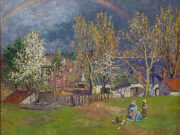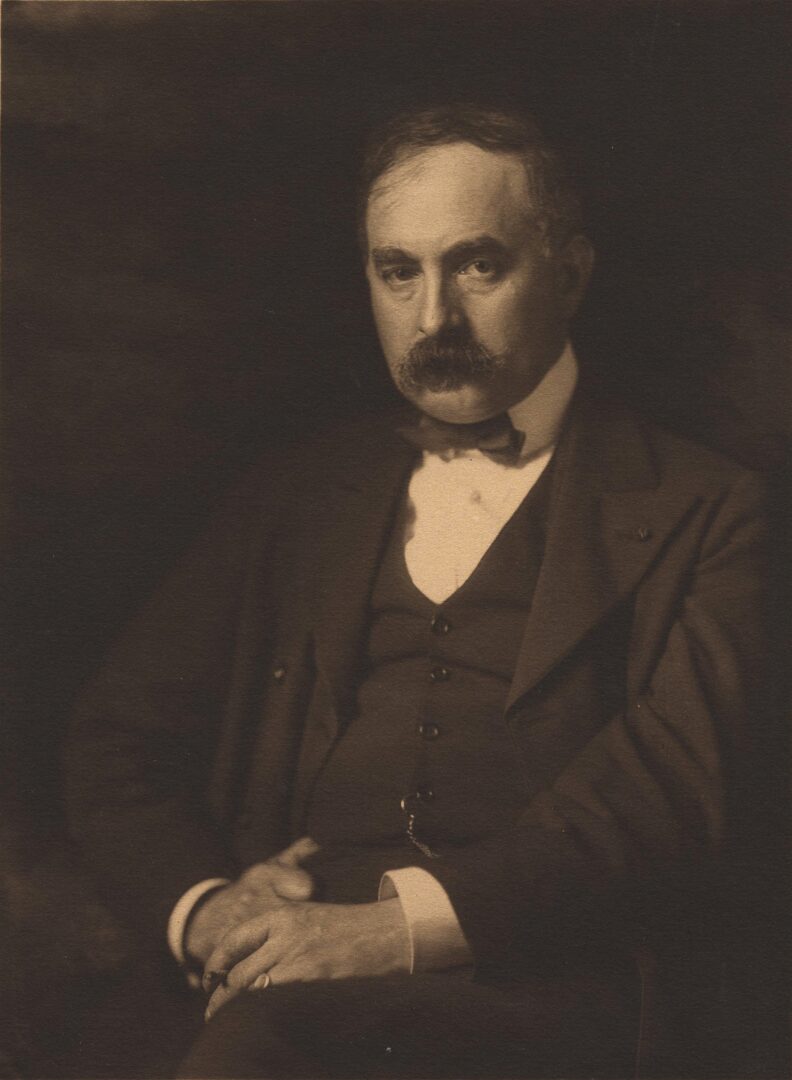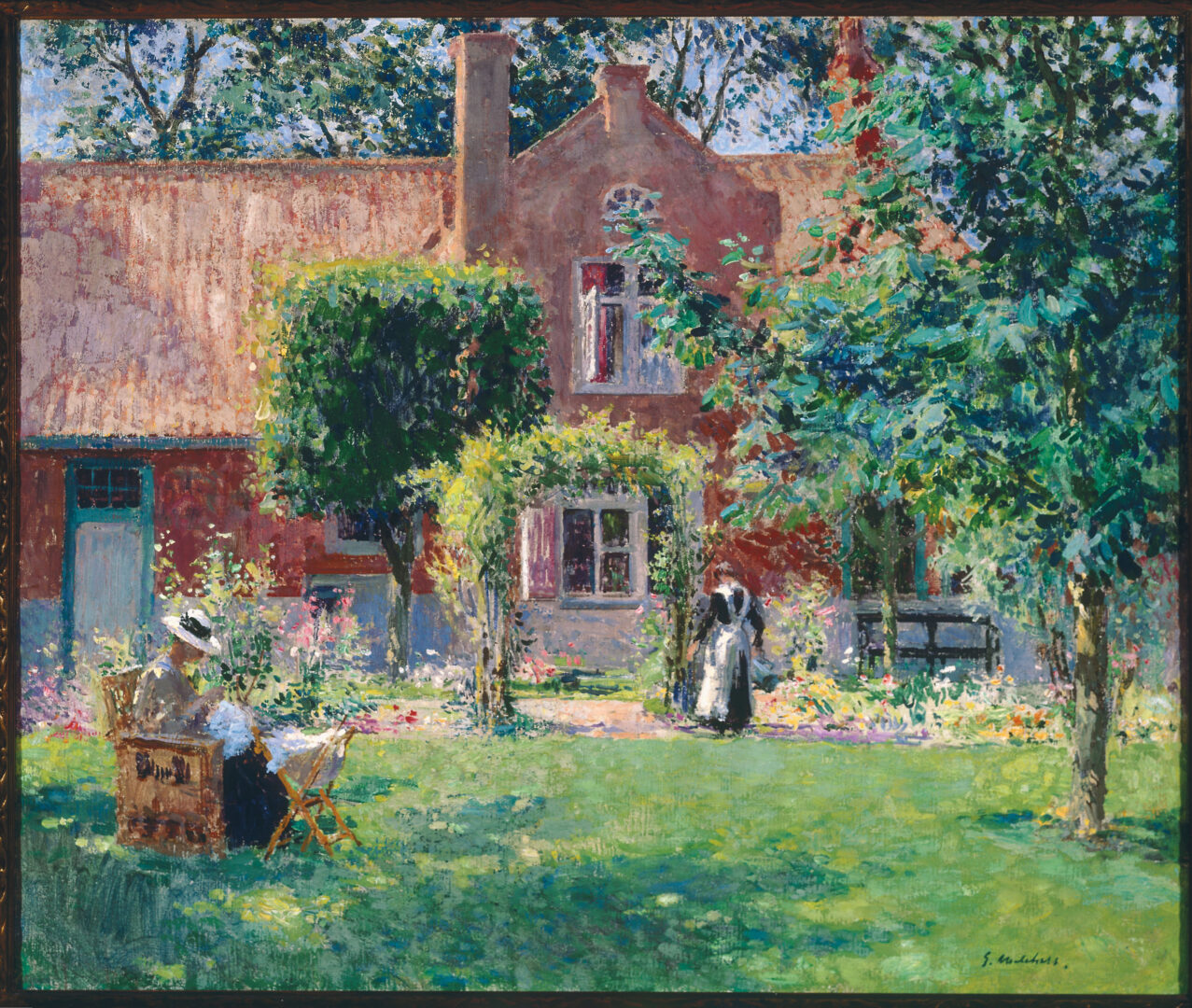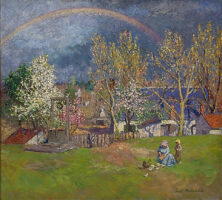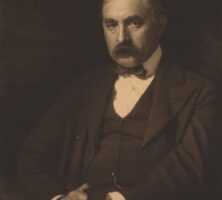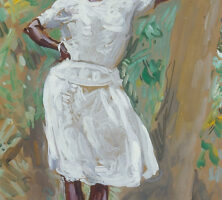Gari Melchers was a distinguished late-nineteenth- and early-twentieth-century artist whose work was well known in Europe and the United States. He spent the major portion of his career as an expatriate, exhibited throughout the art capitals of Europe to great acclaim, and accepted important commissions that brought him to the United States for prolonged periods. His marriage to Corinne Lawton Mackall of Savannah led to a connection with that city’s Telfair Academy of Arts and Sciences (later Telfair Museums). There he assumed a pivotal role, acquiring more than seventy paintings for the museum’s permanent collection. He is known for his Dutch paintings of everyday life and religious scenes; impressionistic landscapes, murals, and portraits; and leadership in several cultural organizations.
Family and Education
Julius Garibaldi Melchers was named for his father and Giuseppe Garibaldi, the Italian patriot, but he was known throughout his life as Gari. Born in Detroit, Michigan, on August 11, 1860, to Marie Bangetor and Julius Melchers, he was the oldest of four children. His father, a native of Westphalia, Prussia (which later became part of Germany), settled in Detroit in 1855. Trained at the Ecole des Beaux-Arts in Paris, France, the elder Melchers was a sculptor and woodcarver who executed several statues for City Hall in Detroit but was better known for crafting cigar-store Indians. He also taught Sunday morning art classes, where his son received his earliest training. At the age of seventeen, Gari left for Europe, where he resided until 1915.
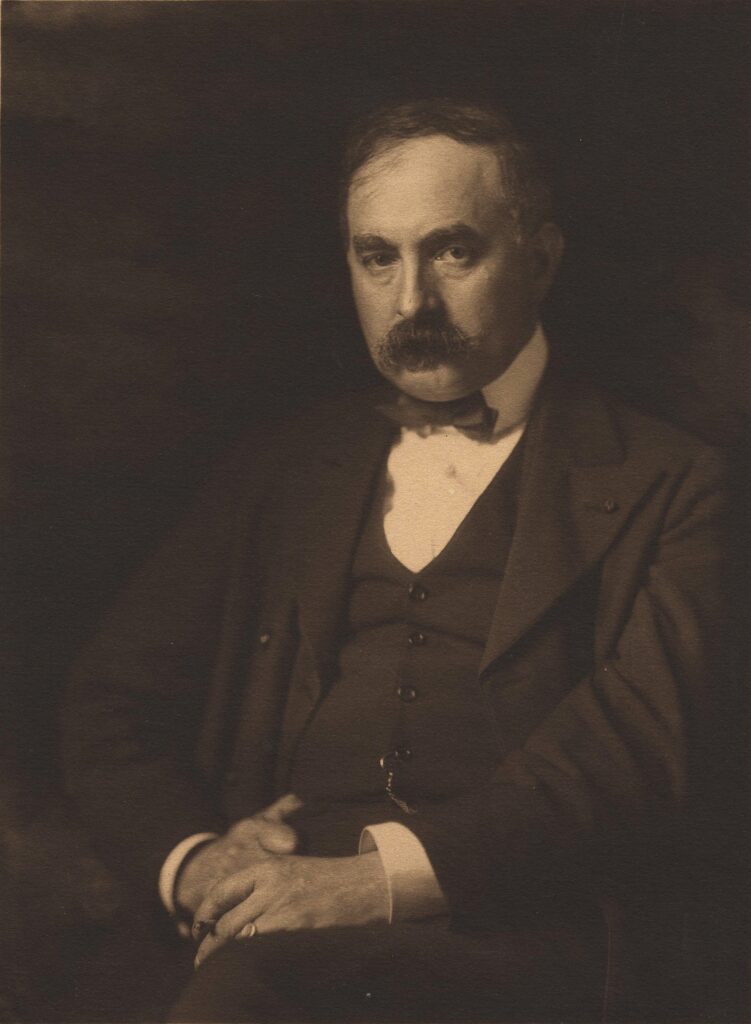
Image from Frank Scott Clark
From 1877 until 1881 Melchers attended the Königliche Kunstakademie in Düsseldorf, Germany, where he studied with Eduard von Gebhardt and Peter Janssen. The rigorous academic training he received there emphasized drawing and attention to detail in carefully composed genre scenes, often rendered in muted colors. Melchers’s early paintings reflect this aesthetic influence in subject matter and style.
Melchers left Germany for additional training in Paris. In 1881 he was accepted at the prestigious state-run Ecole des Beaux-Arts and augmented this training with study at the progressive Académie Julian with Gustave Boulanger and Jules Lefebvre. His first painting selected for exhibition at the Paris Salon was The Letter, shown in 1882. A realistic genre scene painted in Brittany, in the north of France, it displays all the hallmarks of his training.
Early Career
In 1884, after a visit to Detroit, Melchers returned to Europe and, with fellow artist George Hitchcock, established a studio at Egmond aan Zee, a small fishing village on the North Sea in the Netherlands near Alkmaar. Rural Dutch life appealed to the artist, and many residents of the village served as models in his paintings. He chronicled the daily life of his neighbors, which included their celebrations and religious worship. The Sermon (1886), housed in the Smithsonian American Art Museum in Washington, D.C., and The Communion (1888), housed in the Johnson Museum of Art at Cornell University in Ithaca, New York, are important works of this period. Drawn to the clarity of natural light, he hung a sign over the door to his studio with the inscription Waar en Klaar (True and Clear), which succinctly defined the artist’s personal aesthetic of suffusing his paintings with an encompassing, reflected light.
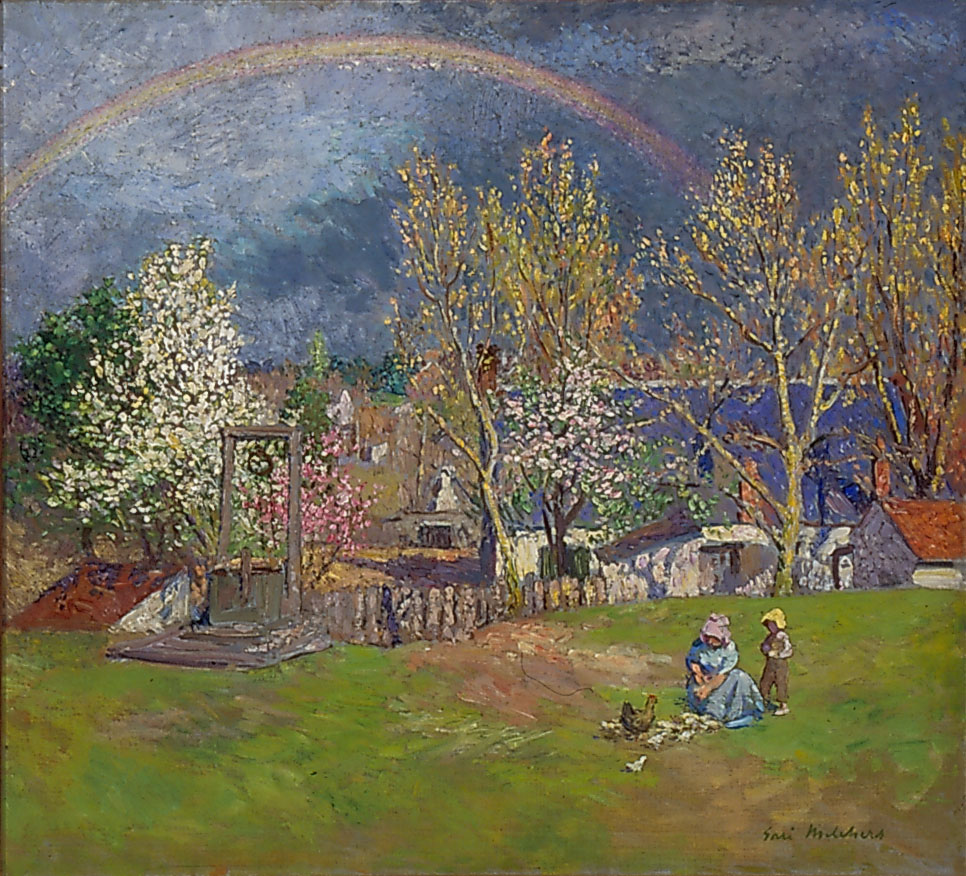
Courtesy of Morris Museum of Art
Melchers’s work was widely exhibited throughout Europe, and he earned many medals and prizes. In an 1888 Munich exhibition, Melchers’s entry was awarded a first prize, and one by another American expatriate artist, James Abbott McNeill Whistler, won second prize. The following year, four paintings by Melchers were included in the American Section of the Paris Exposition Universelle. Of the eight grand prizes awarded to non-French artists, two went to Americans—one to Melchers and one to John Singer Sargent. Melchers’s success in Europe came to the attention of influential American art collectors, and his work began to be exhibited in the United States.
In 1893 Melchers was commissioned to create two murals for the World’s Columbian Exposition in Chicago, Illinois, where he also served as a member of the International Jury of Award. His two murals, The Arts of Peace and The Arts of War, were installed in the Manufacturers and Liberal Arts Building and later were placed at the University of Michigan in Ann Arbor. He created a similar set of murals for the Library of Congress.
During the closing years of the nineteenth century, Melchers was among the best known American artists residing in Europe. He maintained several studios in addition to his home in the Netherlands, and he exhibited regularly on both sides of the Atlantic. Among the many accolades he received were medals from exhibitions in Amsterdam, Netherlands; Antwerp, Belgium; Berlin, Germany; Dresden, Germany; Paris; and Vienna, Austria, as well as in Buffalo, New York; Chicago; and Philadelphia, Pennsylvania. He was made a Chevalier of the Legion of Honor in France and a Knight of the Order of St. Michaelin Bavaria. In addition, he accepted portrait commissions in the United States; indeed, they were his main source of income and allowed him to visit his native country for prolonged periods.
Impressionism and Later Career
During a transatlantic voyage to Italy in 1902, Melchers met Corinne Lawton Mackall. Two months after their initial meeting, Mackall visited Egmond aan Zee in order to study art with George Hitchcock. When her studies ended, Melchers followed her to Paris, and the couple married on April 14, 1903, on the Isle of Jersey.
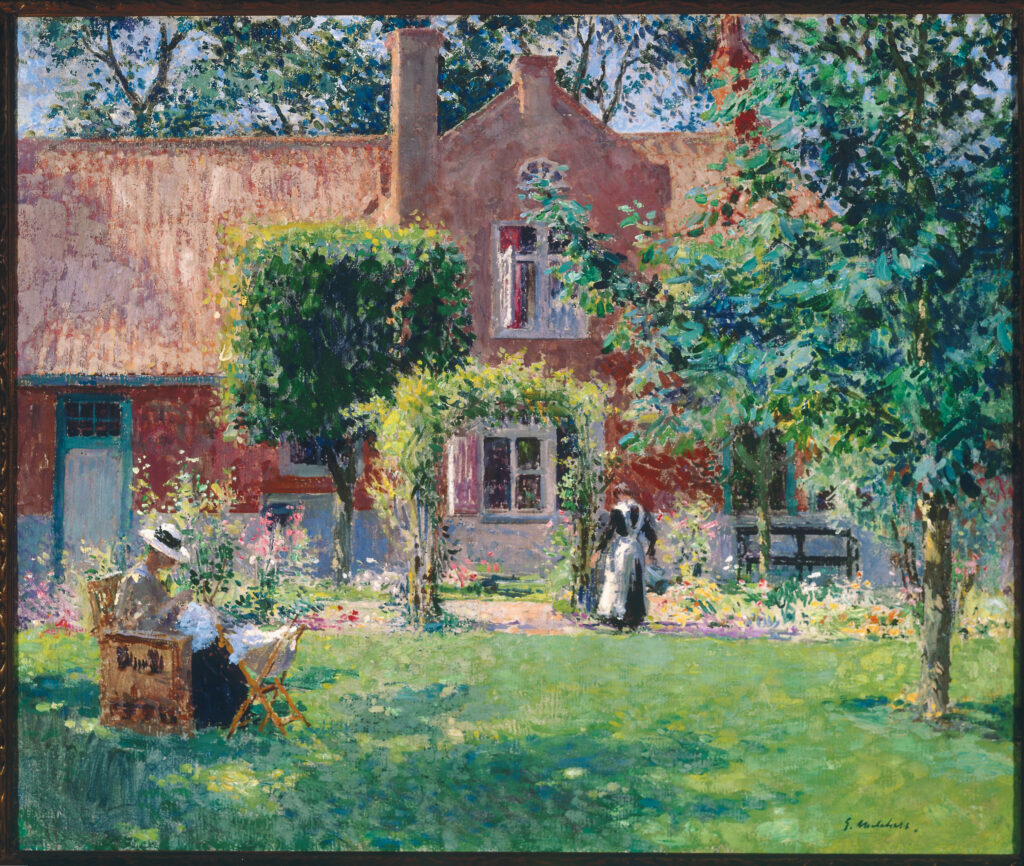
Courtesy of Telfair Museums.
From the outset of his marriage, Melchers’s work changed stylistically. Inspired by impressionism, he began painting domestic and leisure-filled scenes, while his brushwork loosened and his palette brightened. (See, for example, Skaters (circa 1893) at the Pennsylvania Academy of the Fine Arts in Philadelphia.) He continued his interest in religious imagery but began using women and children as secular versions of the Madonna and Child.
Corinne Melchers’s maternal uncle, A. R. Lawton, was at this time president of the Telfair Academy of Arts and Sciences in Savannah. In 1906 he contacted Melchers regarding an unpaid appointment to serve as a fine arts advisor to the museum. Over a period of several years, the artist acquired more than seventy works of art for the Telfair. These works not only exemplify his high academic standards, but also include many of the museum’s most important American impressionist paintings of the period.
Melchers continued to evolve his own personal style of a light-filled, impressionist-inspired realism. He became an associate member of the National Academy of Design in New York in 1904 and was designated a full academician two years later. In 1909 Melchers was named professor of painting at the Grand Ducal Academy of Fine Arts in Weimar, Germany, a position he held for five years. He and his wife left Europe in 1915, and that same year Melchers painted a portrait of Wymberly Jones De Renne, a prominent collector of Georgia historical works. The following year he bought Belmont, an eighteenth-century, twenty-seven-acre estate in Falmouth, Virginia.
For the last sixteen years of his life, Melchers worked from several studios on the grounds of Belmont and in a studio on 40th Street in New York City. He also became actively involved in several cultural organizations. For instance, he chaired a federal commission that explored the feasibility of forming a national gallery of art (this became the Smithsonian American Art Museum) and served as president of the Century Association and the New Society of Artists. He was also active with the Virginia Arts Commission, gave his support to the historic preservation movement in his adopted state, and was appointed to the board of directors of the Corcoran Gallery of Art in Washington, D.C.
During the final decade of his life, Melchers executed murals for the Detroit Public Library and the Missouri State Capitol. Numerous solo exhibitions of his work were held, including one at the American Academy of Arts and Letters in New York City, which opened just before the artist died on November 30, 1932.
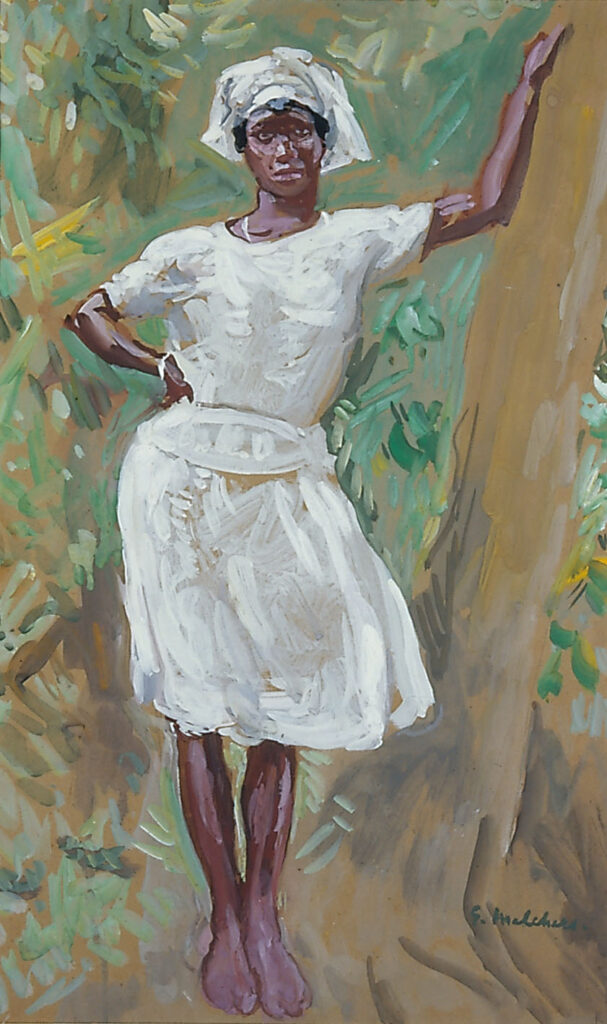
Courtesy of Morris Museum of Art
Corinne Melchers survived her husband by twenty-three years. In 1942 she bequeathed Belmont, now known as the Gari Melchers Home and Studio, to the state of Virginia as a memorial gallery. Administered by the University of Mary Washington in Fredricksburg, Virginia, the museum, which is devoted to Melchers’s work, opened to the public in 1975.
With changes in aesthetic tastes, Melchers’s reputation faded after his death. In an era of modernist abstraction and a new, vital realism, his stylistically conservative paintings were viewed by many as old-fashioned. Today his paintings are found in numerous private and public collections and museums throughout the country. Indeed, renewed interest in late-nineteenth- and early-twentieth-century American art has led to a rediscovery of Melchers and his work.


